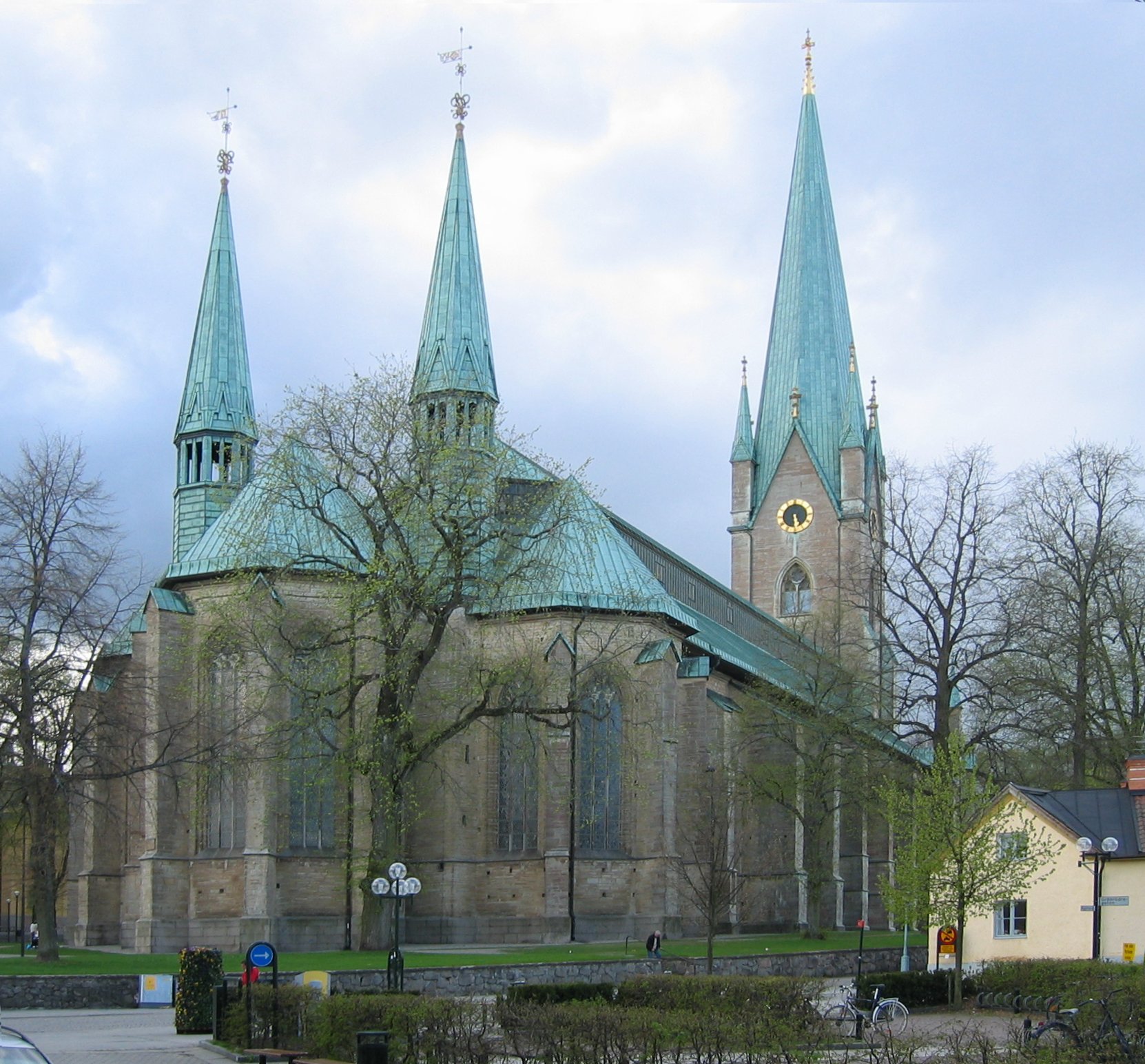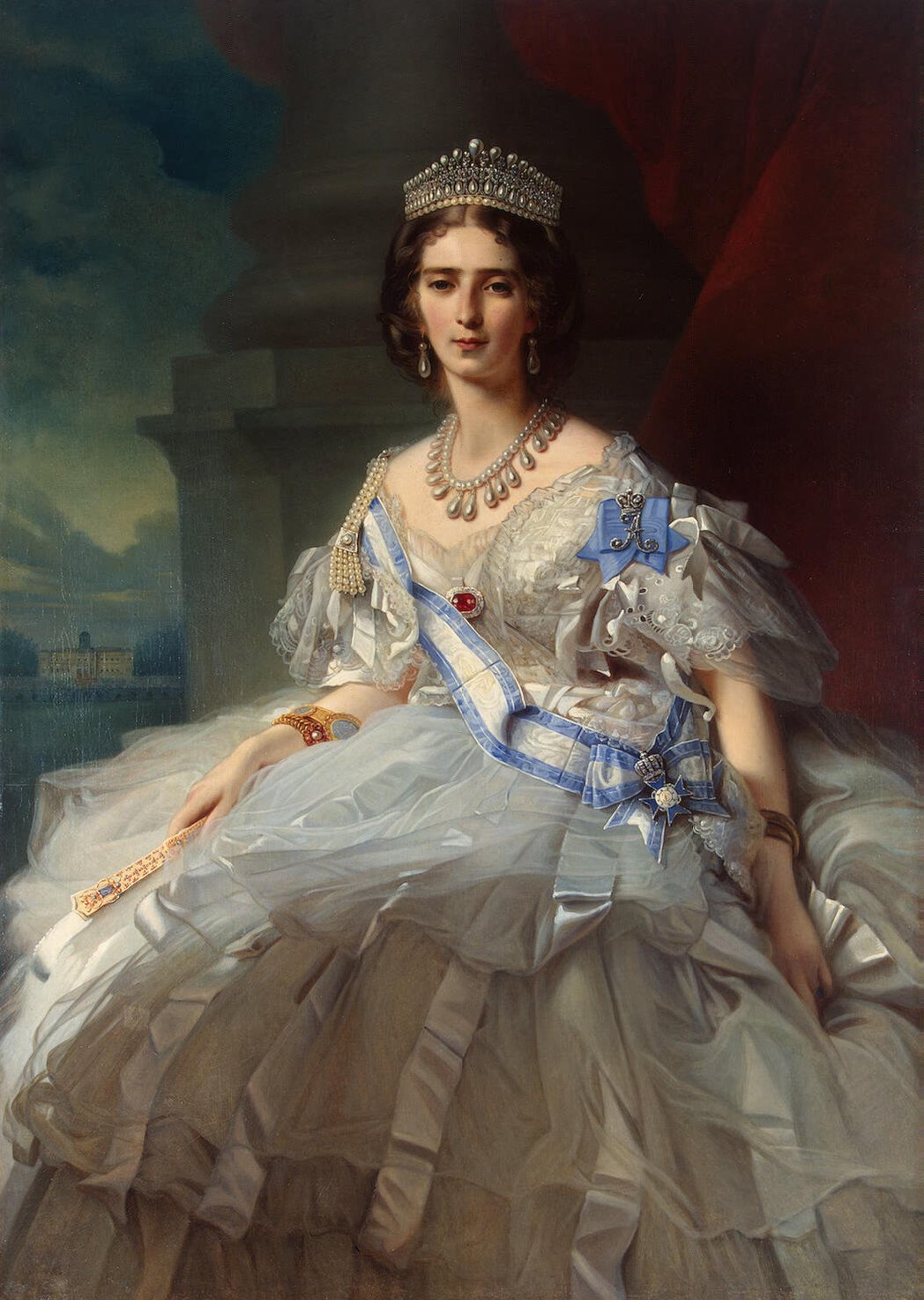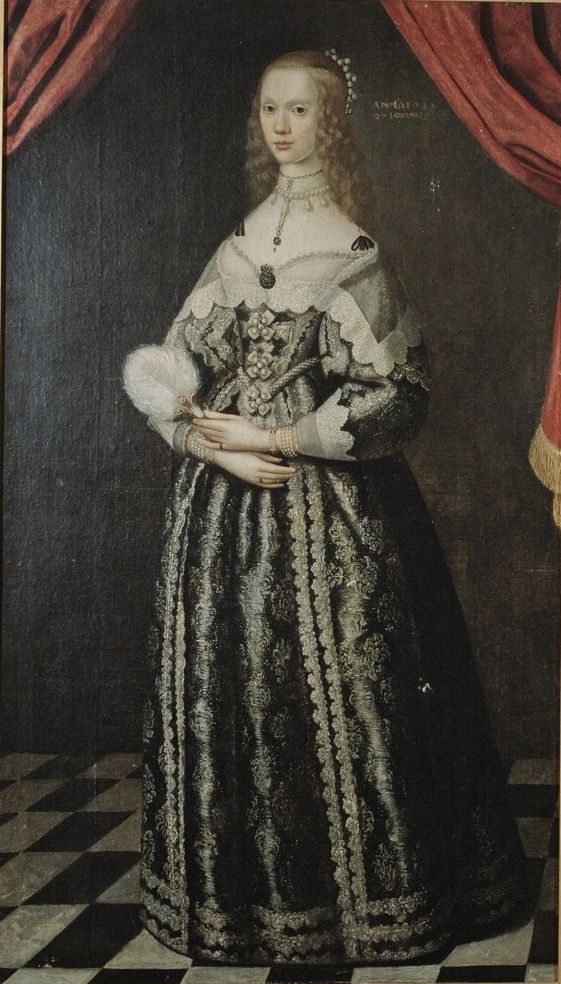|
De La Gardie Family
The De la Gardie family (also de la Gardie) is the name of a distinguished Swedish nobility, Swedish noble family of France, French origin. History The family's social status in France is uncertain; the founder, Ponce d'Escouperie, son of a tradesman, came to Sweden as a mercenary in 1565 and took the name Pontus De la Gardie when registered by the House of Nobility (Sweden), House of Knights. He was given the title friherre in 1571 and married Sofia Johansdotter Gyllenhielm, an illegitimate daughter of king John III of Sweden, John III in 1580. The baronial title ended with his eldest son John De la Gardie. Pontus De la Gardie's second son, Jacob De la Gardie, was given the title count of Läckö Castle, Läckö in 1615; his grandson Magnus Gabriel De la Gardie became a favourite of Christina of Sweden, Queen Christina and married her cousin, Countess Palatine Maria Eufrosyne of Pfalz, Maria Eufrosyne of Zweibrücken (a sister of Charles X Gustav of Sweden). The De la Gardie of L ... [...More Info...] [...Related Items...] OR: [Wikipedia] [Google] [Baidu] |
Swedish Nobility
The Swedish nobility ( sv, Adeln eller Ridderskapet och Adeln) has historically been a legally and/or socially privileged class in Sweden, and part of the so-called ''frälse'' (a derivation from Old Swedish meaning ''free neck''). The archaic term for nobility, ''frälse'', also included the clergy, a classification defined by tax exemptions and representation in the diet (the Riksdag). Today the nobility does not maintain its former legal privileges although family names, titles and coats of arms are still protected. The Swedish nobility consists of both "introduced" and "unintroduced" nobility, where the latter has not been formally "introduced" at the House of Nobility (''Riddarhuset''). The House of Nobility still maintains a fee for male members over the age of 18 for upkeep on pertinent buildings in Stockholm. Belonging to the nobility in present-day Sweden may still carry some informal social privileges, and be of certain social and historical significance particularly am ... [...More Info...] [...Related Items...] OR: [Wikipedia] [Google] [Baidu] |
Linköping
Linköping () is a city in southern Sweden, with around 105,000 inhabitants as of 2021. It is the seat of Linköping Municipality and the capital of Östergötland County. Linköping is also the episcopal see of the Diocese of Linköping (Church of Sweden) and is well known for its cathedral. Linköping is the center of an old cultural region and celebrated its 700th anniversary in 1987. Dominating the city's skyline from afar is the steeple of the cathedral, Domkyrka. Nowadays, Linköping is known for its university and its high-technology industry. Linköping wants to create a sustainable development of the city and therefore plans to become a carbon-neutral community by 2025. Located on the Östergötland Plain, Linköping is closely linked to Norrköping, roughly to the east, near the sea. History The city is possibly named after the '' Lionga ting'' assembly which according to Medieval Scandinavian laws was the most important thing in Östergötland. Exact location ... [...More Info...] [...Related Items...] OR: [Wikipedia] [Google] [Baidu] |
Axel Von Fersen The Elder
250px, Fredrik Axel von Fersen Count Fredrik Axel von Fersen (5 April 171924 April 1794) was a Swedish statesman and soldier. He served as Lord Marshal of the Riksdag of the Estates, and although he worked closely with King Gustav III before and through the Revolution of 1772, he later opposed the king. Biography A son of Lieutenant-General Hans Reinhold von Fersen, he entered the Swedish Life Guards in 1740, and from 1743 to 1748 was in the French service in the Royal-Suedois, where he rose to the rank of brigadier. In the Seven Years' War Fersen distinguished himself during the operations round Usedom and Wollin in 1759, when he inflicted serious loss on the Prussians. But it is as a politician that he is best known. A member of the Hat party, at the Riksdag of 1755–1756, he was elected Lord Marshal and served three non-consecutive terms in that post before the Revolution of 1772. In 1756 he defeated the projects of the court for increasing the royal power; but, after th ... [...More Info...] [...Related Items...] OR: [Wikipedia] [Google] [Baidu] |
Hedvig Catharina De La Gardie
Hedvig Catharina von Fersen, née De la Gardie (Stockholm, 20 May 1732–Stockholm, 24 April 1800) was a Swedish noble. She was the daughter of the General and ''riksråd'' count Magnus Julius De la Gardie and the political salonist Hedvig Catharina Lilje, and sister of scientist Eva Ekeblad. Life She married the ''riksråd'' count Axel von Fersen the Elder in 1752. Hedvig Catharina was the heir of Löfstad Castle, and her marriage thereby strengthened both the social and economic position of her spouse. She became the mother of Hedvig Eleonora von Fersen (1753–1792), Hans Axel von Fersen (1755–1810), Sophie von Fersen (1757–1816), and Fabian Reinhold von Fersen (1762–1818). Through her marriage, she became the matriarch of one of the most powerful noble families in Sweden and a ''riksrådinna'' (spouse of a riksråd), securing her a position in the very elite of the Swedish aristocracy, and socialized in the circles of the royal court: Queen Louisa Ulrika once referre ... [...More Info...] [...Related Items...] OR: [Wikipedia] [Google] [Baidu] |
Eva Ekeblad
Eva Ekeblad (née De la Gardie; 10 July 1724 – 15 May 1786) was a Swedish countess, salon hostess, agronomist, and scientist. She was widely known for discovering a method in 1746 to make alcohol and flour from potatoes, allowing greater use of scarce grains for food production, significantly reducing Sweden's incidence of famine. Ekeblad was the first female member of the Royal Swedish Academy of Sciences (1748).Riksarkivet Band 12 (1949), p.637 Wilhelmina Stålberg, P. G. Berg. 1864, pp. 130–131 Life Personal life Eva Ekeblad was born in 1724, originally named Eva de la Gardie before her marriage to Co ...[...More Info...] [...Related Items...] OR: [Wikipedia] [Google] [Baidu] |
Catherine Charlotte De La Gardie
Countess Catherine Charlotte De la Gardie (née Catharina Charlotta Taube; 5 April 1723 – 24 March 1763), also known as Catherine Charlotte de La Gardie, was a Swedish countess and courtier. She is famed for her support of the smallpox vaccination in Sweden, and for stopping the last witch trial in her country. Life Born to Count Edvard Didrik Taube of Odenkat and Kristina Maria Falkenberg, Catherine was the younger sister of the royal favourite Hedvig Taube, who was the royal mistress to king Frederick I of Sweden from 1731 to 1744. Catherine Charlotte served as ''hovfröken'' to Crown Princess Lovisa Ulrika from 1744 until 1748. Catherine Charlotte De la Gardie has been described as talented, brave, beautiful and clear sighted, without prejudices and with an open mind.Cathérine Charlotte De la Gardie (f. Taube), urn:sbl:17374, Svenskt biografiskt lexikon (art av B. Boéthius); hämtad 29 October 2013. (in Swedish) She received but a customary shallow lady's education of ... [...More Info...] [...Related Items...] OR: [Wikipedia] [Google] [Baidu] |
Brita Sophia De La Gardie
Brita Sophia De la Gardie (22 April 1713 – 1797) was a Swedish noble and amateur actress who later converted to Catholicism and became a nun. She was a central member of the cultural life in Stockholm in her time. She played a part in the history of Swedish theatre. She was the maternal aunt of Count Axel von Fersen the Younger. Life Brita Sophia De La Gardie was born to the politician Count Magnus Julius De la Gardie and the political salonist Hedvig Catharina Lillie. She was the sister-in-law to the scientist Eva Ekeblad. Culture personality During the 1720s and 1730s, amateur theatre was immensely popular in Stockholm and at the royal court. At the time, there were no Swedish language theatre in the capital; only foreign theatre companies performed professionally at the national stage of the Bollhuset Theatre. In 1732, ''Dom Japhlet d'Arménie'' by Scarron was performed at the stage of Bollhuset by the noble amateur troupe of Count Carl Gustaf Tessin and Countess Ulla ... [...More Info...] [...Related Items...] OR: [Wikipedia] [Google] [Baidu] |
Magnus Julius De La Gardie
Magnus Julius De la Gardie (14 April 1668 – 28 April 1741), son of Axel Julius De la Gardie, was a Swedish general and statesman, member of the Swedish Hats Party. Magnus Julius De la Gardie was born in 1668 in Stockholm. He started his military career in the French army, where he fought for the French in the War of the Spanish Succession. After the Battle of Malplaquet in 1709, he became a Swedish Colonel at the Royal Dalarna Regiment, which he led in the Battle of Gadebusch in 1712. After the successful battle, he was appointed Swedish Major General, and in 1717 he became a Lieutenant General. After the dramatic death of King Charles XII in 1718, Magnus Julius De la Gardie became a member of the Privy Council of Sweden. The newly appointed Privy Councillor commissioned architect Joseph Gabriel Destain to design Tullgarn Palace. In 1719 he was appointed President of the Kommerskollegium, and in 1727 he became a Marshal. Magnus Julius De la Gardie was a vocal friend of the F ... [...More Info...] [...Related Items...] OR: [Wikipedia] [Google] [Baidu] |
Lady-in-waiting
A lady-in-waiting or court lady is a female personal assistant at a court, attending on a royal woman or a high-ranking noblewoman. Historically, in Europe, a lady-in-waiting was often a noblewoman but of lower rank than the woman to whom she attended. Although she may either have received a retainer or may not have received compensation for the service she rendered, a lady-in-waiting was considered more of a secretary, courtier, or companion to her mistress than a servant. In other parts of the world, the lady-in-waiting, often referred to as ''palace woman'', was in practice a servant or a slave rather than a high-ranking woman, but still had about the same tasks, functioning as companion and secretary to her mistress. In courts where polygamy was practised, a court lady was formally available to the monarch for sexual services, and she could become his wife, consort, courtesan, or concubine. ''Lady-in-waiting'' or ''court lady'' is often a generic term for women whose r ... [...More Info...] [...Related Items...] OR: [Wikipedia] [Google] [Baidu] |
Johanna Eleonora De La Gardie
Johanna Eleonora De la Gardie (1661 in Hamburg – 1708 in Stockholm), was a Swedish writer, poet, lady-in-waiting and noblewoman. Biography Johanna was the daughter of Pontus Fredrik De la Gardie and Beata Elisabet von Königsmarck. She received a cultivated education, along with her sister Ebba Maria De la Gardie and her cousins Amalia von Königsmarck and Maria Aurora von Königsmarck; her sister became a respected poet and singer at court. Johanna became lady-in-waiting and, with her sister, a favourite of Queen Ulrika Eleonora of Denmark, and was also a friend of the queen dowager, Hedwig Eleonora of Holstein-Gottorp. Johanna participated at the amateur theatre of the royal court, encouraged by Queen Eleanora. In the winter of 1683–84, a group of female courtiers performed the Swedish premiere of ''Iphigénie'' by Racine at court. In the play, Johanna acted the part of ''Iphigenie'', Amalia von Königsmarck as ''Achilles'', Aurora von Königsmarck as ''Clitemnestre'', Aug ... [...More Info...] [...Related Items...] OR: [Wikipedia] [Google] [Baidu] |
Axel Julius De La Gardie
Axel Julius de la Gardie (1637–1710) was a Swedish Field Marshal and was appointed Governor-General over Estonia. Axel Julius was the son of military commander Jacob De la Gardie and Ebba Brahe. He became colonel of an infantry regiment and a cavalry regiment and in 1684 he attained the rank of major general in the cavalry, and was a colonel in the Royal Guard. In 1668 he became lieutenant general and finally, later, Field Marshal. Upon the threat of war with Russia, he received orders to command the troops in Finland and Ingria and take necessary defensive actions. At the ''landtag'' he held in 1676 in Åbo Turku ( ; ; sv, Åbo, ) is a city and former capital on the southwest coast of Finland at the mouth of the Aura River, in the region of Finland Proper (''Varsinais-Suomi'') and the former Turku and Pori Province (''Turun ja Porin lääni''; ..., the government granted the request of new war efforts. He married Sofia Juliana Arvidsdotter Forbus in 1664 {{DE ... [...More Info...] [...Related Items...] OR: [Wikipedia] [Google] [Baidu] |
Maria Sofia De La Gardie
Maria Sofia De la Gardie (1627 – 22 August 1694) was a Swedish noble, countess, courtier, banker and industrialist entrepreneur. She is most known for her industrial enterprises, and she has been referred to as the first female grand entrepreneur of her country. She served as ''överhovmästarinna'' to Queen Christina of Sweden. Biography Early life Maria Sofia De la Gardie was born to count Jacob De la Gardie and Ebba Brahe. She was the sister of Magnus Gabriel De la Gardie, the favorite of Queen Christina, Queen of Sweden and the sister-in-law of Princess Countess Palatine Maria Eufrosyne of Zweibrücken, the cousin of the queen. She was born and raised in Swedish Estonia, where her father was governor of Reval. In 1643, she married baron Gustaf Gabrielsson Oxenstierna (1613–1648), nephew of regent Axel Oxenstierna (1583–1654) who succeeded her father as governor of Estonia. As was the custom in 17th century Swedish nobility, she kept her own name also after marriage. ... [...More Info...] [...Related Items...] OR: [Wikipedia] [Google] [Baidu] |






